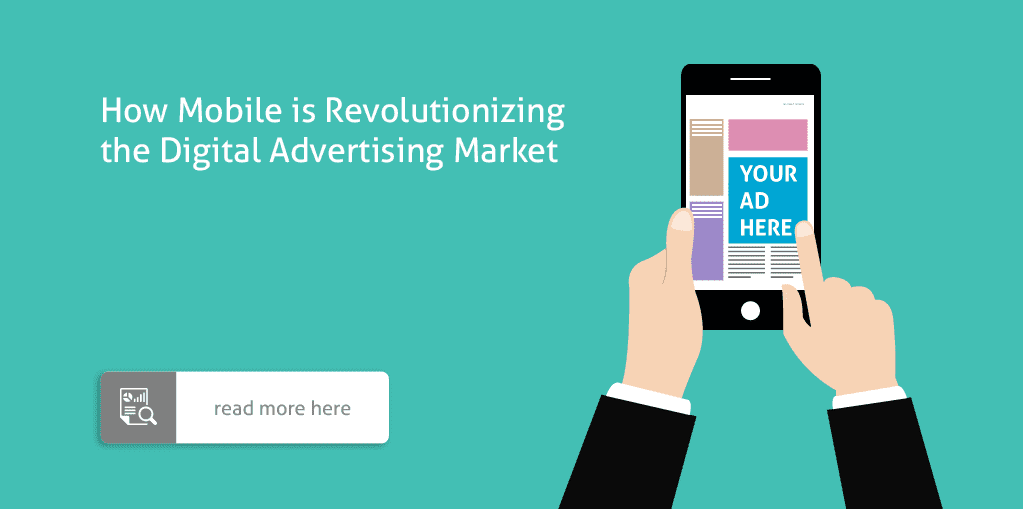The numbers tell the story: Mobile has become the primary channel for consumer information. According to Internet Trends, consumers spend 25 percent of their time on mobile devices, compared to 22 percent on desktop computers. In addition, U.S. mobile ad revenues reached a 66 percent increase in 2015, compared to a 5 percent increase in desktop revenues.
If that’s not convincing enough, consider this: Google has officially announced that more searches are conducted on mobile devices than on desktops.
As the mobile juggernaut revolutionizes the digital advertising industry, marketers are coming up with cost-effective ways to fit the mobile framework — a framework that includes smaller screens and less space for engaging consumers.
Formatting Native Advertising to a Mobile Scale
Native advertising may be the new wunderkind of digital marketing, but even this proven platform has to be scaled differently for mobile use. To optimize space and pack more of punch, native programmatic ads are being formatted in sound-bite-sized conversational posts that are embedded with strategic PPC points, then placed in apps and content feeds.
Major publishing companies, such as The New York Times, Forbes, USA Today, The Wall Street Journal and Time Inc., are already using native advertising in their mobile marketing campaigns. This is because its unique, sophisticated model — interesting content seamlessly integrated with advertising that doesn’t read like advertising — lends itself especially well to content-rich websites.
Goal-Driven Advertising in the Mobile Market
For the mobile market, goal-driven advertising begins with one crucial element: driving existing customers to your mobile app. According to a Nielsen study, mobile users spend 89 percent of their mobile time on native apps as opposed to 11 percent in web browsing.
Once customers are using your app, you can focus on PCP and CPC strategies.
How Mobile Trends Are Affecting Conversion Rates
Analytics show that, while desktop ad shares are decreasing, mobile ad shares are significantly increasing — and thanks to mobile, CPCs are at all-time highs.
According to a Google study, 93 percent of mobile users who research a product or service go on to purchase it. When PPC points are strategically implemented in native advertising content, they can lead to lucrative conversions and ultimate purchasing.
Popular Ad Platforms Are Going Mobile
Here are some popular digital advertising platforms that have recently turned much of their focus to mobile advertising:
- Google AdWords: Google AdWords runs a native mobile device app that, like other native apps, is completely immune to the marketer’s bane — ad blockers. In early 2016, Google began leveraging DoubleClick in a new wave of native web ads. In addition, Google has added another platform, AdMob, which features revenue-per-click advertising.
- Bing Advertising: According to Bing, mobile searches account for a third of all Bing Network queries. Likewise, nearly half of its ad clicks now come from smartphones.
- Facebook Ads: According to Statista, mobile advertising has accounted for more than 90 percent of Facebook’s revenue growth since 2012. Today, mobile generates 74 percent of Facebook’s annual revenues.
- Instagram Ads: Instagram runs a native mobile device app that’s completely unaffected by ad blockers. Plus, the Instagram community has now grown to more than 400 million users, making it a marketer’s prospective paradise.
According to Business2Community.com, savvy online marketers and web designers are now creating their designs and marketing campaigns first for mobile audiences then re-formatting them later for desktop/laptop use. The time is ripe for this “mobile first” approach, because according to CIO.com, U.S. mobile advertising revenues should reach $58 billion by 2018.
Mobile isn’t just a trend; it’s the future of digital advertising. As the industry evolves, more cost-effective mobile marketing strategies will start to emerge — which is why it’s important to get on top of the mobile bandwagon now while there’s still plenty of room to edge out your competition.
